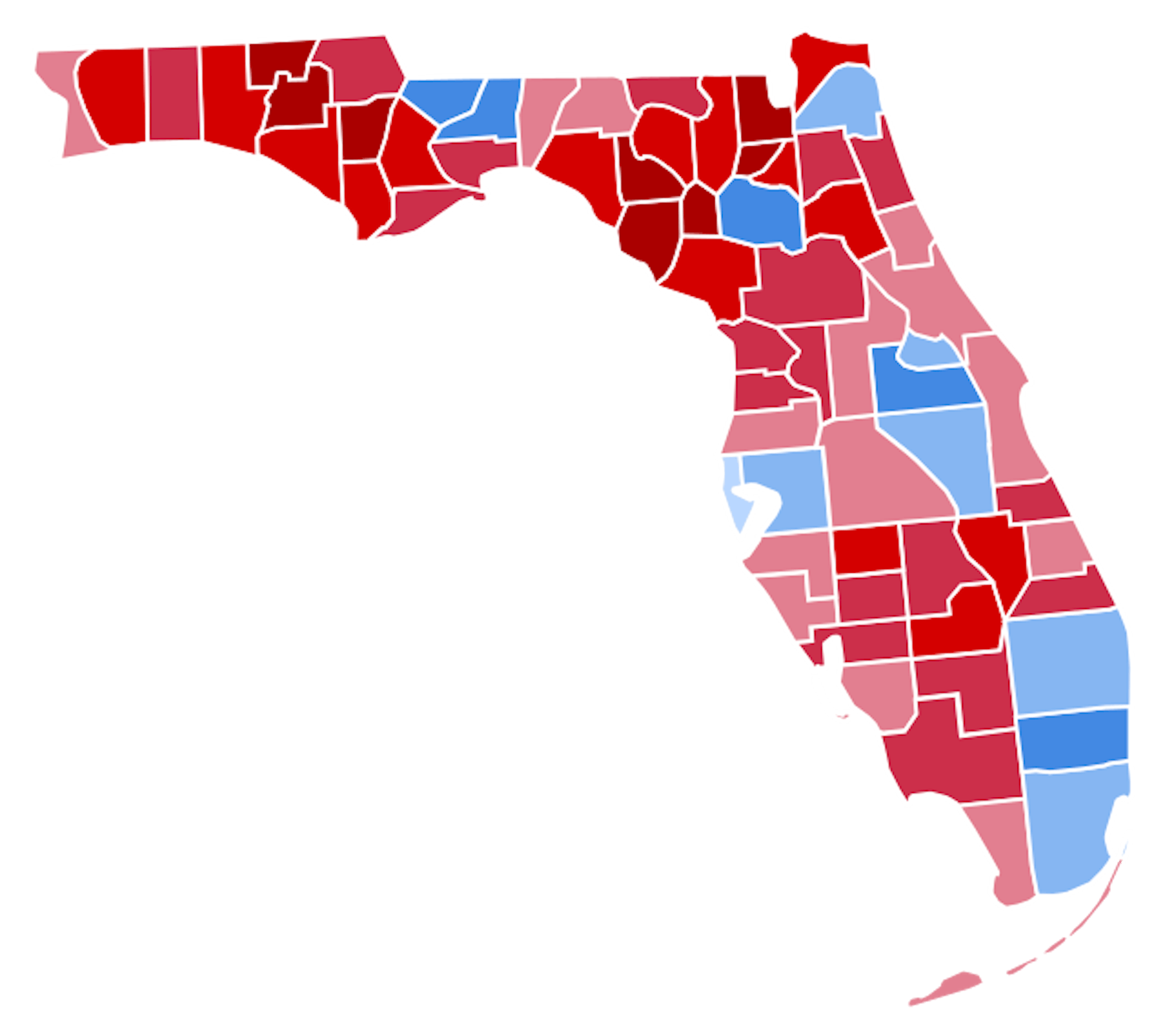0As midterm elections draw closer and voting registration deadlines pass, pundits look at the polling of “swing states” — states with a roughly even population of Democrats and Republicans that have the potential to vote either way in national elections. The results are especially important this year as polls show neither party has a large advantage in either congressional chamber, with Democrats favored in the Senate and Republicans favored in the House. The governorships are also significant, as state law determines hot-button issues like abortion, education and immigration.
Interestingly, the country’s most populous swing state, Florida, is one of its most partisan. Republicans control Florida’s governorship, state house and state senate, and they have for some time. Presently, FiveThirtyEight’s polling composite shows incumbent Gov. Ron DeSantis with almost a 7% lead over Democrat Charlie Crist, with some polls giving him a double-digit gap. Moreover, they forecast challenger Val Demings with a less than 15% chance to defeat incumbent Republican Sen. Marco Rubio. This is despite the fact that Florida is home to large populations of both African American and Hispanic voters, two blocs that are historically key to Democratic success.
All of this forces us to ask: “What happened to Florida’s Democrats?” For starters, this decline isn’t a new phenomenon. The decline began way back in the ‘80s, with the election of Republican Gov. Bob Martinez. The party connected with rural and Dixiecrat voters and swiftly gained power. Florida hasn’t elected a Democratic governor since 1994. However, this decline has accelerated in recent years.
I believe a key turning point was the 2016 election. In line with Florida’s swing state character, it contributed to an upset Trump victory by voting red. This started a precedent of voting Republican in national elections that continued in 2018, 2020 and, most likely, 2022. This progress was multifaceted as Republicans did not simply build on key rural bases — they also narrowed their disadvantage with Hispanic voters, the fastest-growing bloc.
Meanwhile, the Democratic Party has refused to innovate. The party has taken its core constituencies for granted, hoping that the registration gap it has long relied on will suffice for a victory. In the meantime, Florida’s registered Republicans overtook the number of registered Democrats. Nationally, the party has pivoted away from Florida, seemingly giving up on it. Pennsylvanian John Fetterman and Texan Beto O’Rourke are the new faces of Democratic hope.
This is hardly the media or the national party’s fault; Florida Democrats nominated an incredibly unexciting candidate in converted Republican Charlie Crist, who already lost Florida’s 2014 gubernatorial election. Putting their party’s stake in Crist is in character for Florida’s Dems, who are now left with a distant memory of past success. They have failed to rekindle what sparked it and have not promoted or nominated Nikki Fried, the only Democrat to win a statewide election since 2012.
The forecast for Florida is harrowing. The nation’s third-most populous state has become a haven for MAGA populism. As a result of a crucial messaging problem, Democrats have been on the defensive on key culture war issues. A new abortion ban was signed recently, the infamous and ignorant “Don’t Say Gay” law was passed in line with anti-critical race theory stances and Gov. DeSantis shipped migrants all the way to Martha’s Vineyard in a xenophobic move. Democrats have failed to create a cohesive narrative on any of these issues.
These prospects are certainly dire, but there is a reason I still refer to Florida as a swing state. Despite Republican gains, Democratic ideas like a $15 per hour minimum wage, climate action and medical marijuana legalization have proved popular by poll and statewide election. And Democratic voters do exist, by the millions. The party needs to revitalize its core and listen to what its voters want. Unified leadership in the wake of recent troubles is a must. For Democrats, returning to their values is more than running tired candidates and issues — it is finding the ideology that inspired voters in the past and across the country elsewhere.






